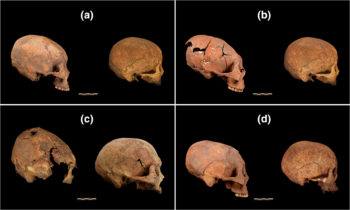Texas A&M Dentistry Professor’s Discovery Points To Evidence Of Skull Shaping
Research at an archaeological site in China led by Dr. Qian Wang, an associate professor in the Texas A&M University College of Dentistry’s Department of Biomedical Sciences, resulted in the discovery of more than 24 elongated skulls dating back between 5,000 and 12,000 years. The findings published in the American Journal of Physical Anthropology point to evidence of skull shaping. Wang, a paleoanthropologist, has been working at the Houtaomuga site with Quanchao Zhang, a bioarchaeologist at Jilin University in Changchun, China.
“This is the earliest confirmed discovery of intentional head modification in the world,” Wang says. “If this practice began in East Asia, it likely spread westward to the Middle East, Russia and Europe through the steppes as well as eastward across the Bering Land Bridge to the Americas. It may have originated independently in different places at different times.”
Wang noted that although the exact meaning of the practice is still unknown, evidence suggests that it is most likely related to the high socioeconomic status of the individuals or their families.
“The emergence of this practice could be a sign of the start of stratification of the social structure among pre-modern population or the beginning of socioeconomic disparity,” he says.
Wang initiated the Global Record of Health Project – Asia Module in May 2018. He leads an international team to systematically document the health, development and disease status of human skeletal remains from historic human populations in the past 10,000 years in Asia.
Through this work, they seek to exam how human health status changes over time and varies with environment, economic mode, climate change, social disturbances and lifestyle.
This article by Kathleen Green Pothier originally appeared in Dentistry Insider.






